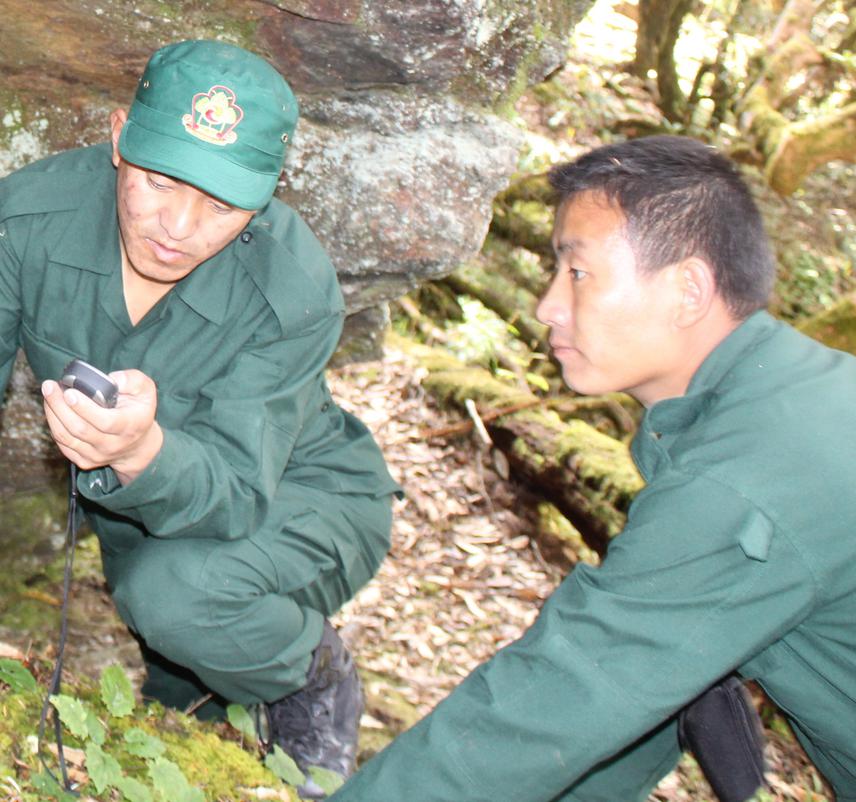Chimmi Dorji
Other projects
23 Jul 2015
To Assess Effect of Electric Fencing as a Mitigation Measures to Human-Bear Conflict and Black Bear Ecology
This project focuses to find out the different types of diets and habitats of the Himalayan Black Bears and the potential threats to the diets and habitats in Zongkha and Pelgiri under Jigme Dorji National Park. Better understanding of the different types of habitats and diets of the black bears and their potential threats would help solve the Human- Bear Conflict in the long run and the findings from this study can be recommended in other Human- Bear Conflict areas.

Noting the habitat. © Chimmi Dorji.
Bhutan’s developmental activities are guided by the philosophy called the Gross National Happiness and therefore, this philosophy demands the development and environment conservation in a win-win situation. The conservation of the natural flora and fauna should not obstruct the developmental activities and at the same time, the conservation of the natural flora and fauna should not be over ridden by the developmental activities. The philosophy also cares the sentiment and happiness of the people of the country. Therefore, all the parks in Bhutan have human settlements in the buffer zones. The settlements in these buffer areas support some form of livelihood and therefore, this residents have the right to modern amenities like any other residents of the country. An eco friendly road construction is under way in the buffer zones of the Jigme Dorji National Park which falls in and near the areas called Zongkha and Pelgiri. The construction of the road might have fragmented and degraded many of the Black Bear habitats and in some parts it might have resulted in the habitat loss of this bear species. The recent problem of the Human- Bear Conflict in these areas could have aroused due to the fragmentation and loss of habitat and displacement due to the ongoing developmental activities and by the competition for resources like wild fruits and vegetables, shoots and canes by the park residents. Therefore, understanding the root cause of the Human- Bear Conflict in these areas is more important than installing the electric fences as a mitigation measures. The installation of the electric fences can be only an interim measure as the bears might get accustomed to the electric fences or else the repair and maintenance of the electric fences might cost more and become unaffordable to the park management and therefore understanding the potential threats to the diets and habitats of the black bear is very crucial.
The conservation agencies in Bhutan have little information on the habitats and diets of the bears and their potential threats and therefore this proposed study would answer the following questions.
1. What are the different types of the bear habitats and their threats?
2. What are the different types of the wild fruits and vegetables and shoots and canes that the bears feed on?
3. Who are the competitors for these diets and how severe is the competition?
4. Understanding the different types of Black Bear Habitats.